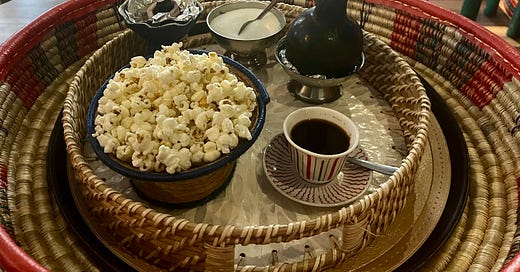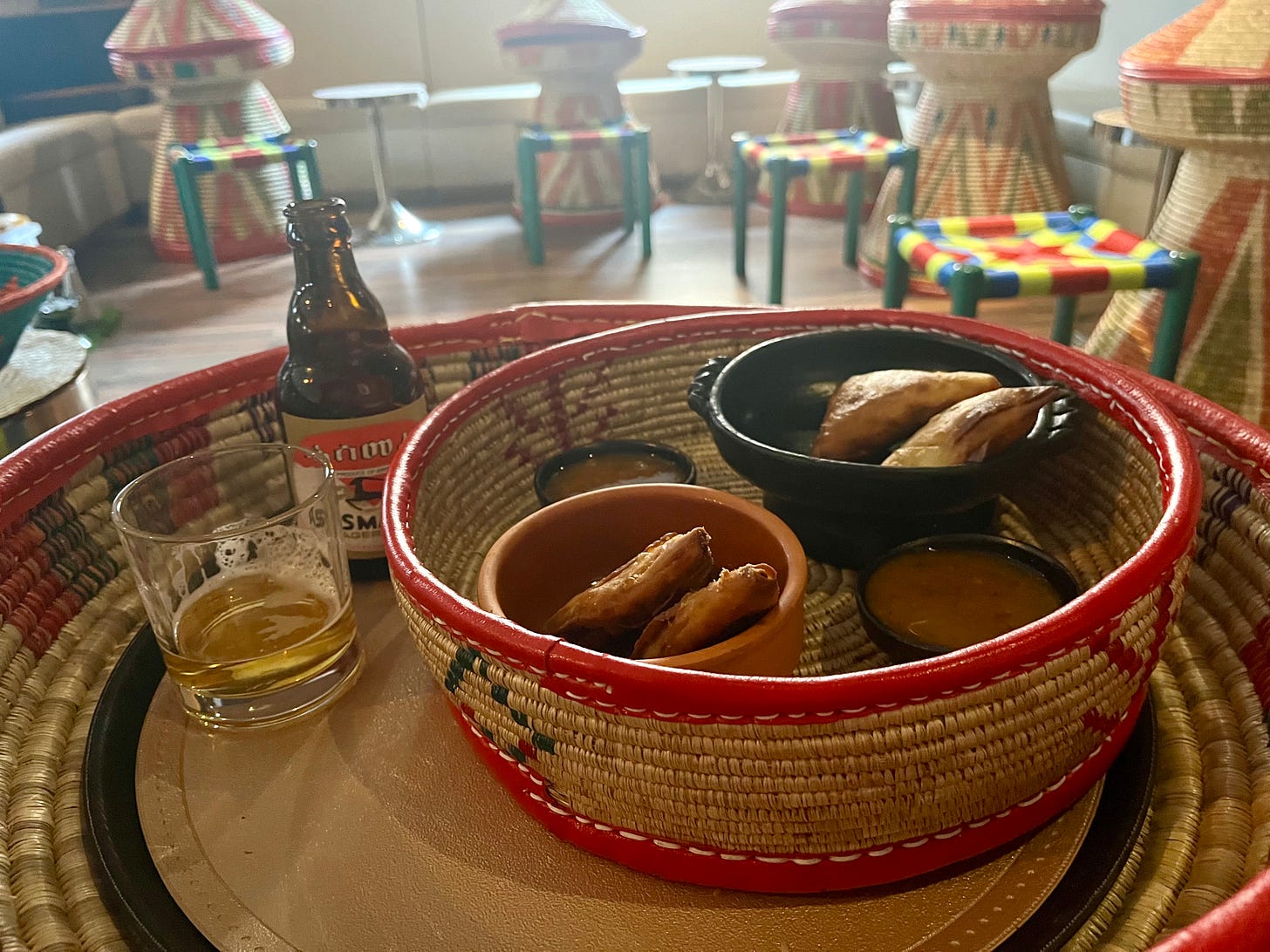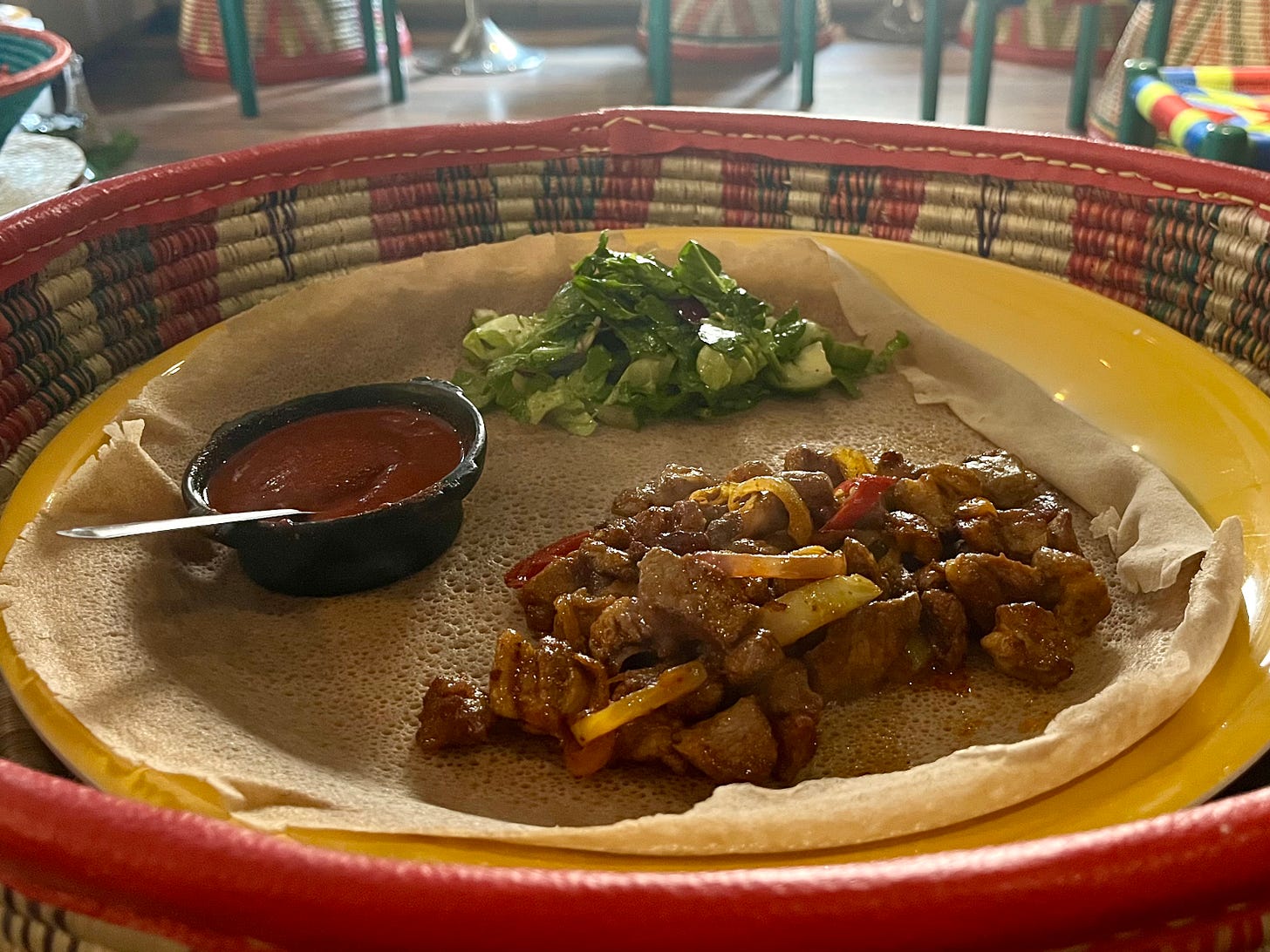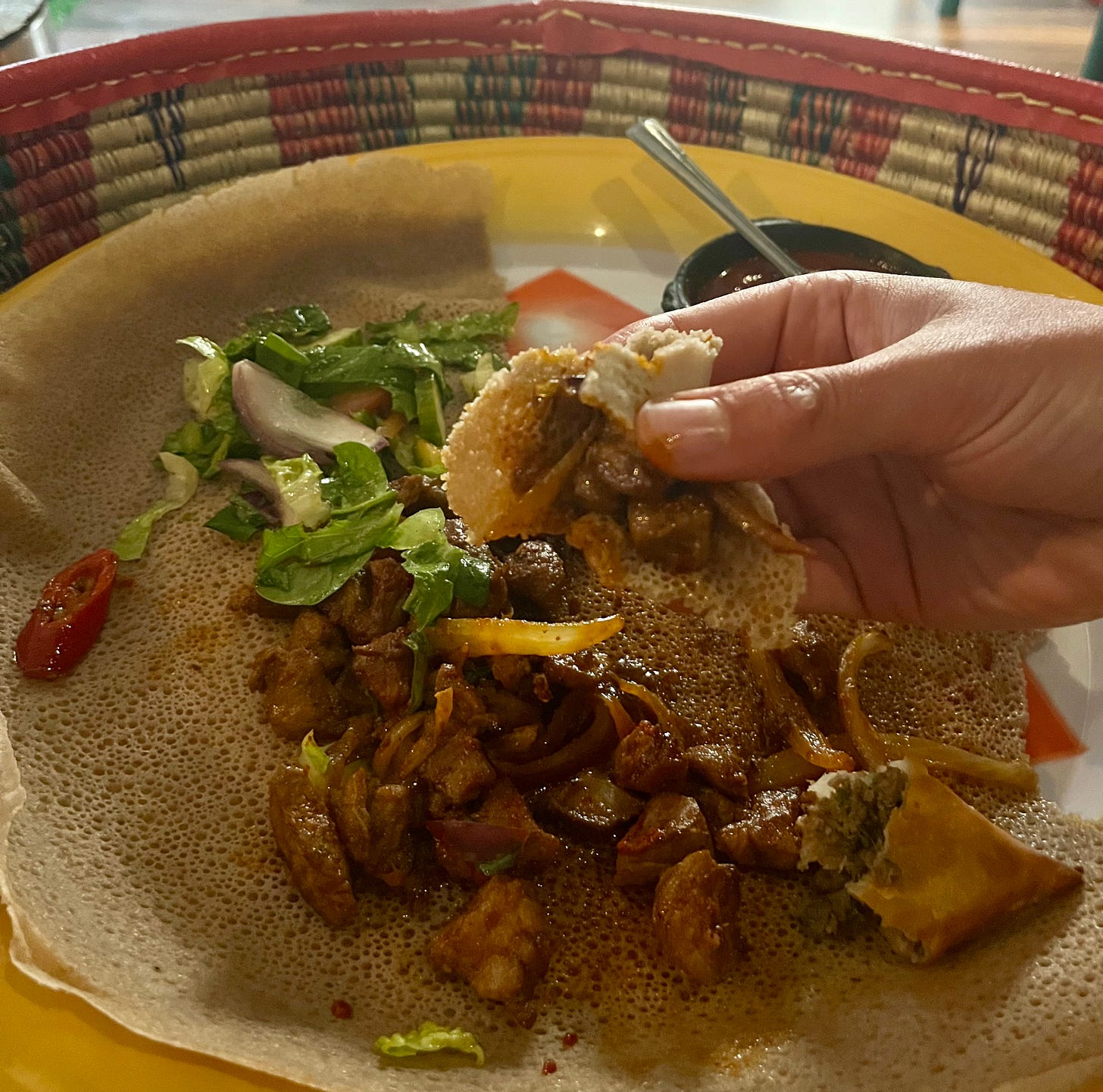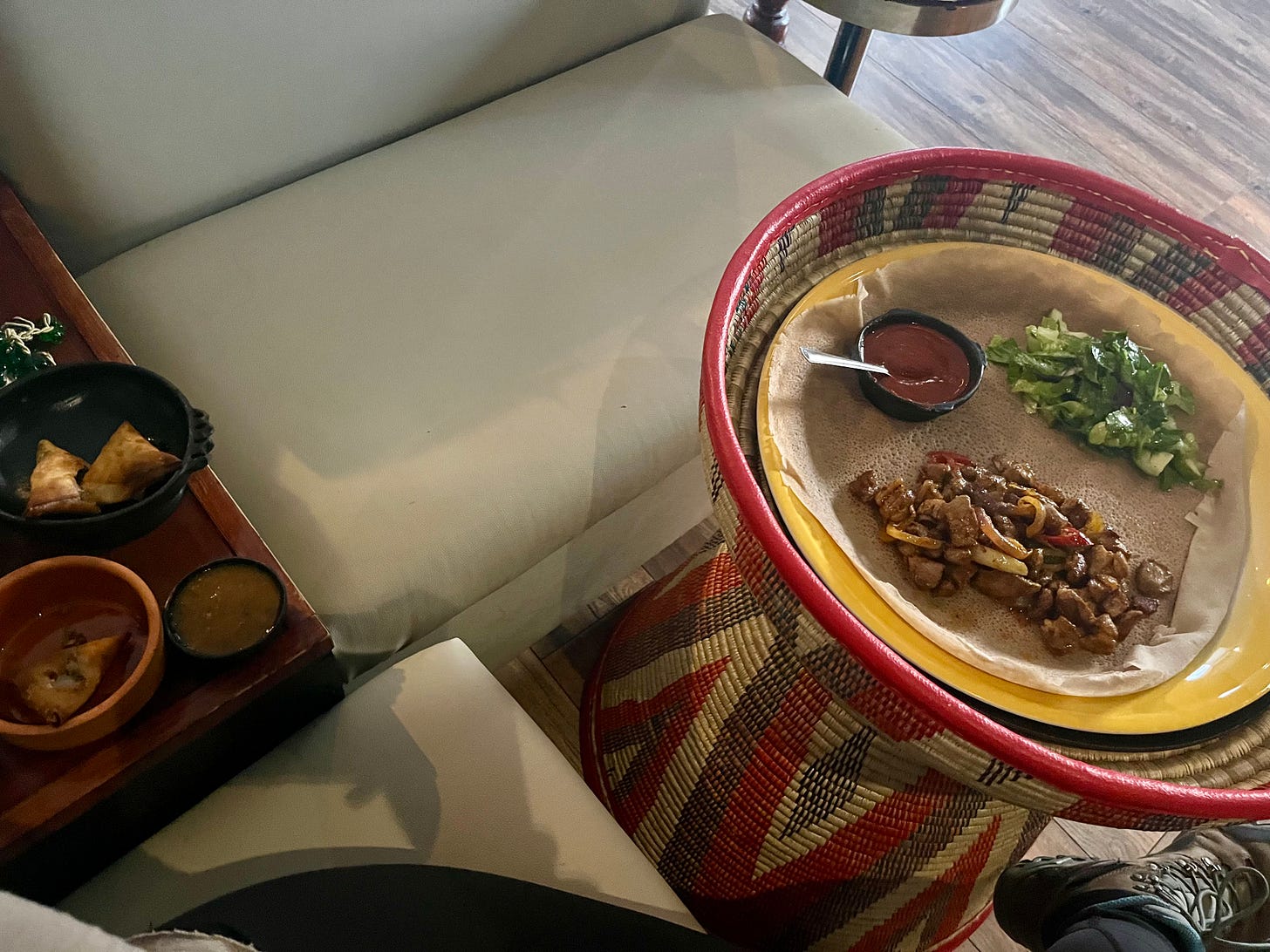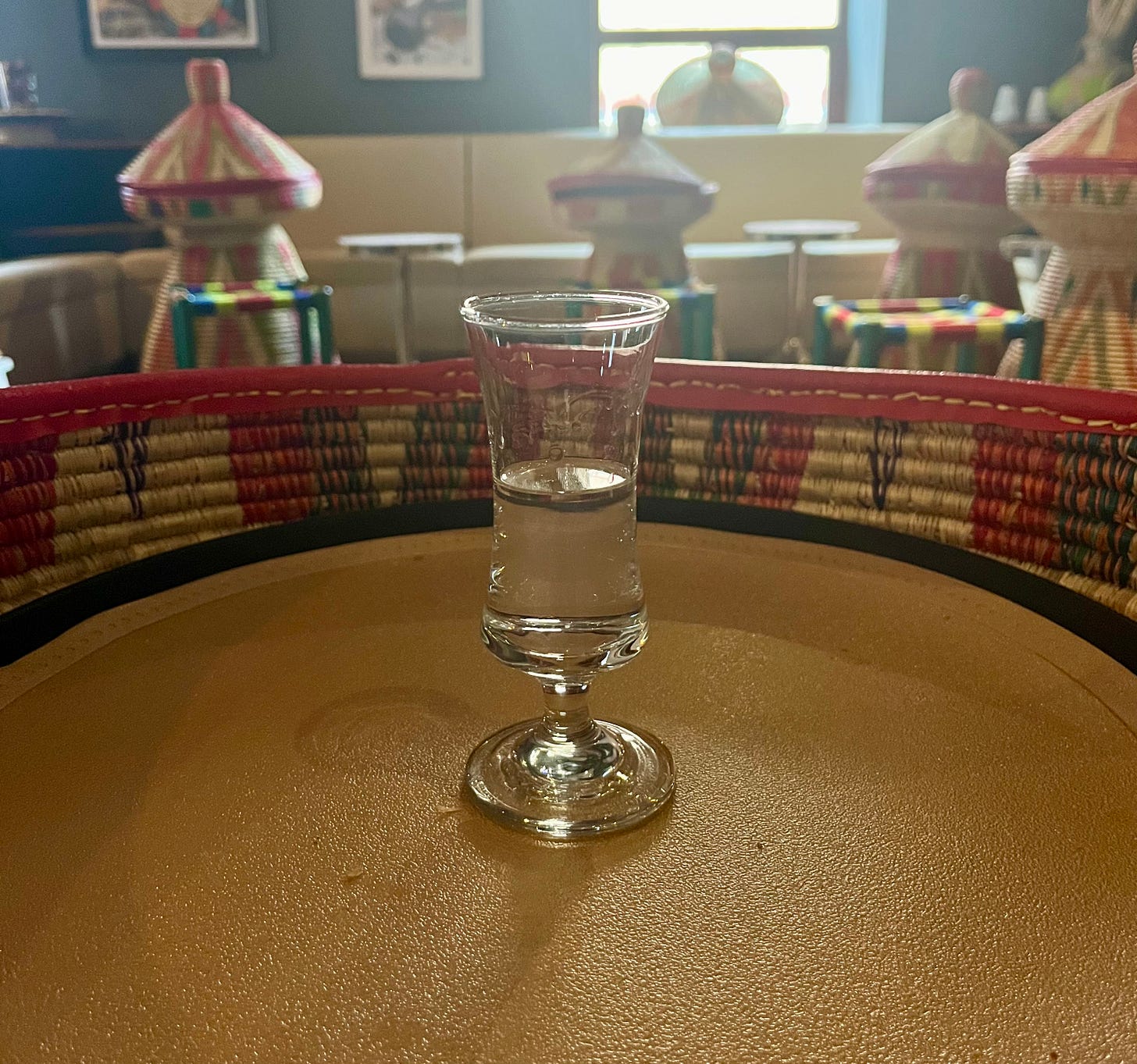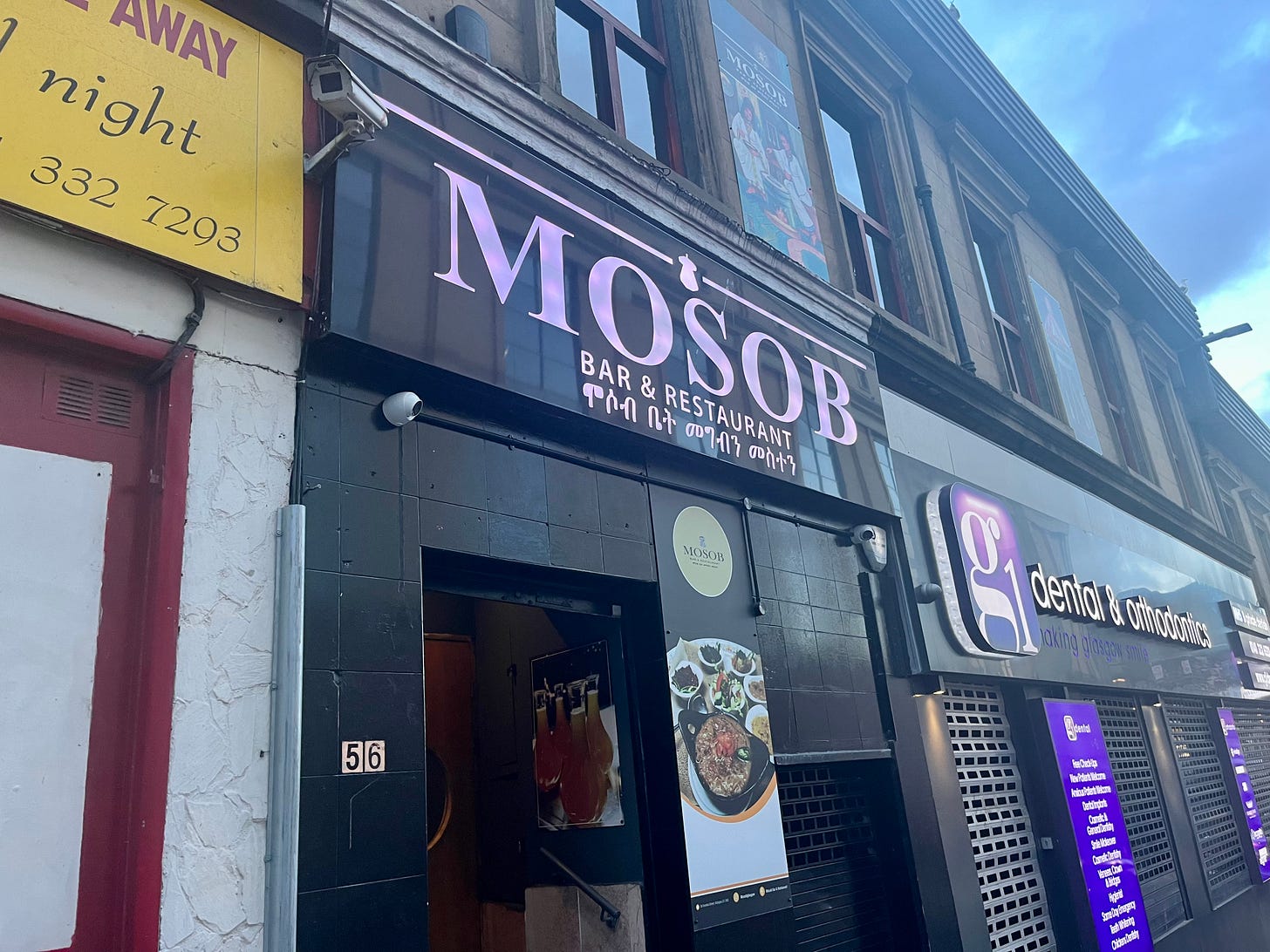No, I didn't fly to East Africa. But I did immerse myself in the experience of an Eritrean restaurant for three and a half hours in Glasgow, Scotland. Someone I met on the Great Glen Way recommended this place to me, and as one of my favorite restaurants back home in San Francisco is an Eritrean place, I knew I had to pay this one a visit.
The Story
It's an unassuming place from the outside, a narrow, black-tiled entrance with a simple sign above it. A natural nervousness arises as there are no windows to look in, which is my way of securing a sense of the environment that I'm entering into. Luckily, a small group of lively locals move towards the door so I allow myself to blend in with the general populous and enter behind them. As I act the tail end of the group, I see the door leads directly to a staircase. I allow space between myself and the group so as not to be mistaken as part of it. After ascending the stairs, I watch the narrowness expand into to a wide and open upper floor. I'm immediately attended to and led towards a smaller section of the restaurant where no one else is sat. I’m sat at a mosob, which is a small woven stand meant to hold the large plates the meals are traditionally served on. I settle into my cornered quarters, appreciating being away from the more bustling area of full booths. My waiter arrives and is immediately a comfort, his high energetics and curiosity allow me to sit taller and lean into conversation. I share with him how I ended up there and relate my joy in finding an Eritrean restaurant. Noting my excitement, he takes me under his wing for the evening. Lamb is one of their favorite meats to use in Eritrean cuisine, so I ask him for the best lamb dish. He puts in an order of lamb tibsi for me, and easily bribes me into an appetizer of sambusas and an Eritrean beer. He promises I'll love it, and I have no doubt I will.
While I wait for my food I absorb my environment. The place is decorated with cultural artifacts — engraved metal cups, woven bowls and baskets, figurines, swords, paintings, copper pitchers, and more.
The Eritrean lager arrives, served with a glass, and shortly after come my sambusas — two lentil and two meat. Before I can finish a single sambusa, my lamb course arrives. The mosob is meant to hold the plate that the main course is on, so we shuffle my beer glass and sambusas to the corner on my left, next to the artifacts, to make room for the plate.
Anyone experienced in fine dining service in the West would be almost mortified at the casualness of which this is done, but I personally love it. I feel at home. The food is, as expected, phenomenal. Traditionally, whatever dish you order is served on injera. Injera is a sour, fermented, pancake-like bread made of teff flour. Rather than eating with fork and knife or even spoon, you tear off a piece of the injera and use it to scoop up the food and place it all in your mouth. The meat is tender and flavorful, the injera perfectly baked to soak up all the juices. I take my time, delicately creating and savoring each bite. I nearly finish it all before I have to pause. The waiter can see the look of fullness on my face, and asks if my stomach is very full. Upon affirming his hypothesis, he offers the Eritrean digestive aid of Araki. It's a licorice-tasting spirit that is often drunk after a large meal. It's a clear spirit, served in a short flute-like glass. It arrives, my food is cleared and sip by sip, a soft sense of relaxation comes over me. I nearly feel ready to fall asleep, melting into the cushions when I smell the antidote wafting towards me.
A woman is walking around with a pot of roasting coffee beans, she shakes it over each table, sharing the aroma with every guest. I'm in no rush, and neither are they. So even after I've paid my check, the waiter quickly talks me into some Eritrean coffee, disclaiming that it takes 15-20 minutes to make. After smelling the roasting beans, there's no way to say no — especially if it takes that long to prepare, you know it's special. Soon enough arrives a woven platter with my coffee. The platter holds many items. A small, carven wooden pitcher holds the coffee, kept warm by sitting in a metal bowl with tinfoil. It has an orange-brown, meshy fabric in the spout -- I assume to filter out the grounds. It's flanked by a small porcelain cup and a small bowl of sugar. But that's not all, I also have a small bowl of popcorn and incense burning on the platter. The smoke rises up in whirls. This isn't just coffee, this is a ritual. I take an entire hour to drink the coffee, savoring it sip by sip.
The Musings
I'm not sure when eating with utensils became the norm in the West, but I'd like to go back in time and shift the direction so it'd still be acceptable to always eat with our hands. I love the experience of it because it forces you to be fully engaged with your food. There's no picking up your phone in the middle of a meal when your fingers are coated in curry or sauce. You're entirely immersed. Can you imagine going to a nice Italian restaurant and eating pasta with your hands? You’d possibly be thrown out. I ate pasta with my hands recently (not in an Italian restaurant, haven't gone that far off the rails yet) and I have to say, I thoroughly enjoyed it. It takes more attention. When I was younger my mother always said the sloppier the food, the better it tastes. I think there's some deeper wisdom in that besides the fact that I loved the Sloppy Joes she would make.
The evening I spent in this restaurant was one to remember not only due to eating with my hands but the fully immersive experience I was gifted. Everything was served with a piece of information, like how Eritrean people “like having something to nibble on” while they drink coffee, which is why it was served with popcorn. While I may have been far from the land whose culture I was experiencing, it was a sweet taste of East Africa in the midst of a busy Scottish city thanks to the Eritrean folks who were keen to share their food and stories with a solitary traveler.

